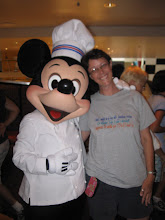This week’s reading is Love Medicine. Written by a Native American author, it focuses on a Native American family and their history through (according to the family tree in the front) five generations. The first half of the book focuses on three of those generations, with a bit of insight from one member of the fourth.
The Kashpaw family lives on a western reservation. Beginning with the death of one of the adopted grown children of Marie and Nector Kashpaw, the book then takes the reader into their lives. The story bounces from one character to another--sometimes members of the same family and sometimes only connected by adoption or love-affair. The author illustrates how the decisions made by one generation can affect those generations that follow.
The author paints pictures with her words, allowing passages to flow with a poetic beauty and rhythm:
“I was not immune, and I would not leave undamaged. To this day, I still hurt. I must have rolled in the beds of wild rose, for the tiny thorns—small, yellow—pierced my skin. Their poison is desire and it dissolved in my blood. The cats made me one of them—sleek and without mercy, avid, falling hungry upon the defenseless body. I want to grind men’s bones to drink in my night tea. I want to enter them the way their hot shadows fold into their bodies in full sunlight. I want to be their food, their harmful drink, to taste men like stilled jam at the back of my tongue” (82).
These words are from Lulu Nanapush, who has married Moses Pillager, a ‘dead’ man who lives as a hermit on an island not far from where Lulu lives. Her marriage to him is in the traditional Ojibwe sense (prologue/family tree). She does love the man, even though she eventually leaves him. The author, Louise Erdrich, paints a picture of Lulu as someone who will not be bound to a man, but who will bind men to her. She will be their poison, the cause of their downfall, and this is the woman she becomes. I include that passage because it is so beautifully written with its poetic flow and mental images. It made an impression on me.
Another impression I get from the book is that the women are the backbone of their men. Nector says, “It seems as though, all my life up till now, I have not had to make a decision. I just did what came along, went wherever I was taken, accepting when I was called on” (141). While the Native American culture may be largely patriarchal, in Erdrich’s book it is the women who have the strength. The men turn to alcohol, they often beat their wives, they have affairs and illegitimate children, yet the women uphold them and stay with them. This is especially true of Marie Lazarre, the wife of Nector Kashpaw. He is unable to hold a job, what money he does earn he often spends on binges. Marie continues to bear children and to take in children that do not belong to her. She feeds them and cares for them, treating them as her own, and she supports herself the only ways she knows, “I was saving cream to sell in those days, trying to make butter, piecing quilts, sewing other people’s clothes, beading dance outfits, whatever I could do to get by without Nector” (97). She is the support of the family, both financially and emotionally. I admire her strength and wish I could be as strong.
The style of the book puts me in mind of The Thorn Birds, with its generational organization and religious undertones. While religion doesn’t really play a big part in the story itself, it is a part of it none the less. We first meet Marie as she is wishing she could become a Saint. Some of the chapter names can have Christian meanings as well (something that was pointed out to me by another student on the class BB), such as the allusion to Fishermen in the first chapter, Saint Marie, Flesh and Blood, and later, Crown of Thorns, and Resurrection.
The Native American culture is rich in its story telling traditions and this story goes along those lines. The pictures Erdrich draws and the way she weaves this family’s story is strong in details and complete in the image she gives us of the Kashpaw family and those connected with them. I don’t think this book will have a happy ending, in the sense that many of us come to expect many books to end. I think it will end with the newest generation learning some things from those preceding it, but falling victim to many of the same traps as well.
Honeymoon Part 3: Return From The Dead
12 years ago

1 comment:
This is great info to know.
Post a Comment